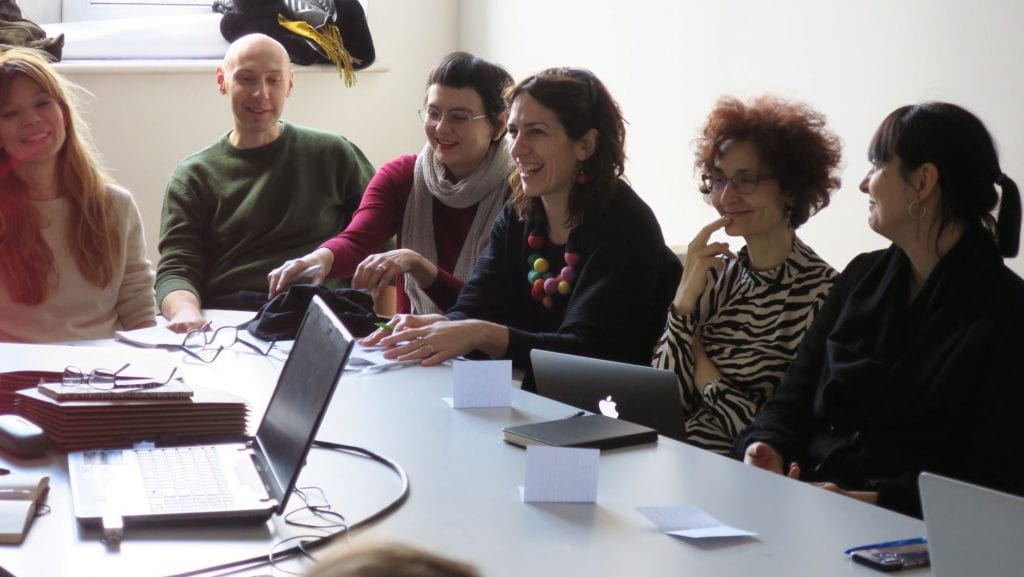Dismantling the Master Narrative
By editorial, on 8 March 2020
Alina Șerban
 The new edition of Confrontations brought us back to the starting question: How to write history on the local ground? This time the question was addressed in the Polish context during an intensive week spend in Warsaw and Lodz, where several proposals were formulated. The opening seminar, hosted by the Zachęta National Gallery of Art in Warsaw, reflected upon some methodological issues concerning the writing of Eastern European art history which opened a series of “debates” surrounding the reading(s) of national histories from a comparative and transnational perspective. This challenging operation appears to be even more demanding to the local art historians since such methodology dismantles the need for a homogeneous master narrative, allowing minor narratives to interfere, to divert and sometimes to completely change our gaze upon well-known stories of the postwar art.
The new edition of Confrontations brought us back to the starting question: How to write history on the local ground? This time the question was addressed in the Polish context during an intensive week spend in Warsaw and Lodz, where several proposals were formulated. The opening seminar, hosted by the Zachęta National Gallery of Art in Warsaw, reflected upon some methodological issues concerning the writing of Eastern European art history which opened a series of “debates” surrounding the reading(s) of national histories from a comparative and transnational perspective. This challenging operation appears to be even more demanding to the local art historians since such methodology dismantles the need for a homogeneous master narrative, allowing minor narratives to interfere, to divert and sometimes to completely change our gaze upon well-known stories of the postwar art. The group seminar led by Maja and Reuben Fowkes focused on the problematic: What does it mean to have a comparative art history and how to write it? They proposed to start from an analysis of several statements written by the Polish art historian Piotr Piotrowski starting with the 90s, all pointing to the necessity of rethinking the framework for considering the historical object and its temporalities. This means to follow actively the interactions and means of transfer, to review the inscribed dichotomies of recent art histories by allowing, in a horizontal manner and spirit, to create new synapses between specific narratives, to enlarge the map by including not just the canonized western positions, but also to introduce other zone of exchanges, other poles, within the Eastern European region and beyond. The re-reading of Piotrowski’s texts reconfirmed some of our current concerns in the field of East European art history, but also unveiled some absences. It was evident when analyzing his arguments that several potentialities lay within, and that several doors opened.
The group seminar led by Maja and Reuben Fowkes focused on the problematic: What does it mean to have a comparative art history and how to write it? They proposed to start from an analysis of several statements written by the Polish art historian Piotr Piotrowski starting with the 90s, all pointing to the necessity of rethinking the framework for considering the historical object and its temporalities. This means to follow actively the interactions and means of transfer, to review the inscribed dichotomies of recent art histories by allowing, in a horizontal manner and spirit, to create new synapses between specific narratives, to enlarge the map by including not just the canonized western positions, but also to introduce other zone of exchanges, other poles, within the Eastern European region and beyond. The re-reading of Piotrowski’s texts reconfirmed some of our current concerns in the field of East European art history, but also unveiled some absences. It was evident when analyzing his arguments that several potentialities lay within, and that several doors opened.
 Close
Close



